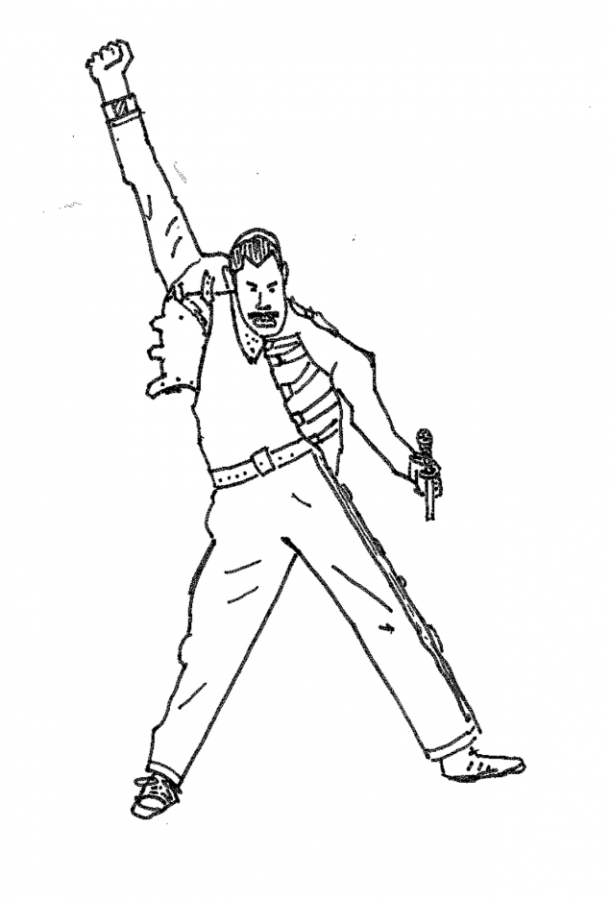“Bohemian Rhapsody”: A Close Second to Witnessing the Iconic Freddie Mercury
The Life of a Rockstar, Through the Good and Bad
November 14, 2018
Falcon Rating: 3/5
Of all the great rockstars of the past, I couldn’t dream of anyone with a larger personality than Freddie Mercury. Often slated as the greatest frontman to any band (a statement I’d agree with), Mercury very much outshone his competition with his distinct wardrobe, spontaneous physicality, and iconic teeth. However, this came at a cost with him resembling a candle burning at both ends. But, as he puts it, “The light is so divine.” Bohemian Rhapsody knows it doesn’t take the silver screen to make Mr. Fahrenheit larger than life, but in no way does it shrink him.
The film begins in 1970—not long before he would become the famous Freddie Mercury, but while he was still Farokh Bulsara, an immigrant from Tanzania. The film opens as Mercury meets his future bandmates and his girlfriend, Mary, at a college pub. The band’s lead singer had quit, so Mercury auditions on the spot with beautiful form. It doesn’t take very long for the band to go from four misfits to rock and roll superstars, living lavishly and touring all around the world. However, the longer they’re together, the more they wear away at what binds them together, eventually splitting up. They are reunited years later by Mercury’s contraction of the AIDS virus, continuing to make music until his death.
To say that approaching the role of someone as iconic and influential as Mercury is difficult for an actor would be an understatement. It’s an even greater understatement to say that Rami Malek nails it. The personality and mannerisms of Mercury are so perfectly replicated here, it’s easy to forget Malek as “the guy from Mr. Robot.” Every scene and performance seems like the ghost of Mercury returned for one final performance. The most convincing aspect of his portrayal is his initial legitimacy, as he acts much the same on stage as he does off. By the end of the movie, however, we get to see Mercury without any of the theatrics, for an emotional glimpse behind the man himself.
There was much controversy surrounding the (credited) director of this movie, Bryan Singer. He was fired last December, shortly after being accused of sexual assault. Dexter Fletcher was hired to finish the project, and knowing that the film was the result of two directors’ visions clarifies some production choices. In some scenes, the story is effortlessly and subtly told through visuals—e.g. when Mercury’s father literally holds onto the innocent young boy he remembered his son as years ago. But then, not five minutes later, a lazy inside joke from Mike Myers in a beard reminds you of the split creative mind. This results in the movie being totally all over the place, often within the same scene.
The scenes you don’t notice any of this duality are the numerous concert scenes. Whether it’s Madison Square Garden or Live Aid, the spectacle of Mercury on stage is one to see. The music alone is already like a live wire in your ear, but getting to be in the audience and watch every sporadic movement is pulse-pounding, to say the least.
The grand finale is the Live Aid concert, arguably the most important moment of the band’s history. As Mercury stares into the innumerable crowd, you can see in his gaze why he became a rockstar: the utterly captivated audience. Bohemian Rhapsody does not interest itself with much of the minutia that bogs down and degrades other biopics. It exists to tell the life of a rockstar, through both his failures and triumphs. I may not have been alive to witness Mercury in the flesh, but this film is a close second.











